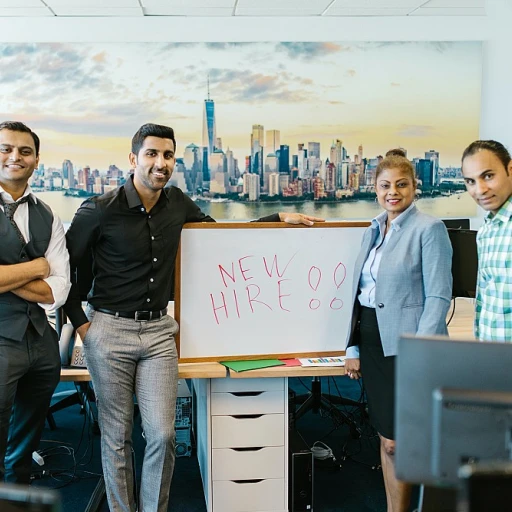
Understanding Leadership Vision
Crafting a Clear Vision for Leadership Success
Establishing a clear leadership vision within a company is not only crucial for the long-term success of the business but also plays a significant role in navigating organizational challenges. Senior leaders are tasked with crafting a strategic direction that aligns with both their company culture and overall business strategy. As organizations evolve, it is essential for leaders to solidify a vision that will drive both short-term achievements and sustainable growth. To foster an understanding of leadership vision, senior executives must engage in insightful conversations with their team members. These discussions should explore strategic questions that clarify the path forward and establish clear objectives for all involved. Leaders should invest time in problem-solving exercises that focus on discerning future opportunities and addressing potential challenges. Questions that help unpack leadership visions include:- What core values should define our leadership approach and how can they be integrated into our daily operations?
- How can we effectively balance our strategy between digital transformation and maintaining established business practices?
- In what ways can our leadership style influence employee engagement and contribute to a thriving company culture?
Navigating Organizational Challenges
Probing the Depth of Strategic Leadership Challenges
Engaging senior leaders in understanding the complex landscape of organizational challenges is essential. The right questions not only uncover potential obstacles but also offer insights into effective problem-solving approaches and leadership strategies. To ensure success, consider addressing the following key areas:
- Cultural Alignment: How does the company culture support or hinder strategic goals? Exploring this question helps in identifying and aligning cultural values with business objectives.
- Adaptive Strategies: In the face of digital transformation, how can the organization adapt strategies to maintain a competitive edge? This question encourages leaders to think beyond short-term solutions.
- Decision-Making Processes: What decision-making frameworks are currently in place, and how can they be improved for more strategic outcomes? Understanding these aspects aids in refining effective leadership styles.
- Long-Term Vision: How are long-term goals and short-term actions balanced to ensure sustainable growth? This question explores the synergy between immediate actions and future objectives.
Strategic questions help uncover key areas that need attention, fostering a robust conversation around how leadership can drive organizational success. To support continuous career growth and employee engagement, it is vital for senior leadership to regularly engage with their teams and address these pressing challenges.
Fostering a Culture of Communication
Creating Open Communication Channels for Leadership Success
In any organization, the success of leadership is significantly influenced by how well communication flows between senior leaders and their teams. Encouraging open communication is crucial in fostering a company culture where everyone feels heard and valued. This section dives into how a strategic approach to communication can support both short-term gains and long-term growth within a company. Firstly, creating open communication channels involves a commitment from senior leaders to engage with team members actively. This not only builds trust but also allows leaders to gain insights into the strategic questions that may arise within their teams. This, in turn, can inform decision-making processes that align with the broader business strategy. Consider asking questions that explore different aspects of your team’s experience within the organization. These might include query-based employee engagement initiatives or employee climate surveys. Such methods provide valuable feedback loops, enabling senior leaders to navigate organizational challenges effectively. Tools such as crafting effective employee climate survey questionnaires can be invaluable here, helping to identify areas for improvement and success metrics. To support this, senior executives must also consider their leadership style and how it impacts communication. For instance, adopting a more participative style may encourage more open dialogue, whereas a directive approach might inhibit team members from speaking freely. Reflecting on these dynamics is essential for those in leadership positions who seek to foster a more communicative company culture. Moreover, digital transformation has ushered in new challenges and opportunities for communication strategies. Utilizing digital tools to facilitate communication can lead to more agile problem-solving and faster response times. This technological approach complements the human aspect of senior leadership by broadening access to strategic questions and insights from team members across diverse locations. In conclusion, creating and maintaining open communication channels demands an ongoing commitment to understanding and improving company culture. It is through this understanding that leaders can drive their teams towards achieving long-term success objectives while also meeting short-term business needs.Aligning HR Strategies with Business Goals
Connecting HR Strategies to Broader Business Objectives
Crafting human resources strategies that are in harmony with overall business objectives is a pivotal step for driving organizational success. This process involves understanding the intricacies of leadership and how strategic decisions align with long-term goals. Here are key focus areas:- Understanding Leadership Priorities: Effective alignment begins with a deep understanding of the senior leaders' vision for the organization. Engaging with leaders through strategic questions will offer insights into their priorities and expectations. This understanding will help tailor HR strategies to support business objectives effectively.
- Identifying Strategic Business Needs: It's crucial for HR teams to have regular dialogues with senior executives to identify and address strategic business needs. Questions about current challenges and opportunities for growth will guide the development of targeted HR initiatives that contribute to solving major organizational challenges.
- Linking HR Initiatives to Business Success: Senior leaders often focus on measurable outcomes. Ensuring that HR strategies link to tangible business results, such as employee retention, productivity improvement, and innovation, will demonstrate their value. This connection helps foster a culture of communication and collaboration across departments.
- Adapting to Change and Innovation: In a fast-paced business environment marked by digital transformation, HR must adapt quickly. Questions that explore how HR can leverage technology to support strategic goals will be essential. Additionally, understanding the company's culture and leadership style can refine HR's approach to change management.
- Consistent Evaluation and Feedback: Regularly evaluating the effectiveness of HR strategies and seeking feedback from leadership and team members will help ensure ongoing alignment. This practice encourages an iterative approach to strategy development, allowing for adjustments based on business growth and shifts in priorities.
Promoting Employee Engagement and Retention
Enhancing Employee Engagement for Long-Term Success
In the realm of human resources communication, promoting employee engagement is pivotal for both short-term achievements and long-term success. Senior leaders play a crucial role in fostering an environment where team members feel valued and motivated. To achieve this, it’s essential to align engagement strategies with the company’s overarching goals and culture.
One effective approach is to ask strategic questions that delve into the heart of employee satisfaction and motivation. Questions such as, "What aspects of our company culture do you find most inspiring?" or "How can we better support your career growth?" can provide valuable insights into what drives your team. These questions help in understanding the unique challenges and aspirations of your workforce.
Moreover, senior executives should consider the impact of digital transformation on employee engagement. As organizations evolve, it’s important to ensure that technological advancements are used to enhance, not hinder, communication and collaboration. This involves regular feedback loops where employees can voice their concerns and suggestions, thus fostering a culture of open dialogue.
Leadership style also plays a significant role in employee engagement. Leaders who prioritize transparent communication and active listening are more likely to build trust and loyalty among their team members. This, in turn, leads to higher retention rates and a more committed workforce.
Ultimately, by focusing on these strategic questions and approaches, senior leaders can create a thriving organizational culture that not only meets immediate business needs but also supports long-term growth and success.
Evaluating Leadership Effectiveness
Measuring Leadership Impact and Effectiveness
Understanding the effectiveness of senior leaders requires an in-depth look at their strategic decisions and the resulting impact on the organization. By asking critical questions, you can gain insights into how well leadership strategies align with business goals and support employee engagement initiatives.- How are leadership decisions impacting the company culture and employee engagement? Questions like this help in assessing whether leaders foster a supportive and collaborative environment that promotes long-term growth and retention.
- What metrics are used to measure leadership success? Senior leaders should regularly evaluate their effectiveness through clear metrics that capture both short-term achievements and long-term strategic impact.
- How does leadership adapt to organizational challenges and digital transformation? Assessing how leaders respond to significant changes can reveal their problem-solving skills and their ability to steer the company through evolving markets and technologies.
- In what ways does leadership facilitate career growth and development for team members? Strategic questions exploring workforce development ensure leaders are not only focused on immediate business results but also on the sustainable development of their teams.
- What feedback mechanisms are in place for leaders within the organization? Having clear channels for feedback allows leaders to continuously improve, staying attuned to the needs and expectations of their teams and the business.












